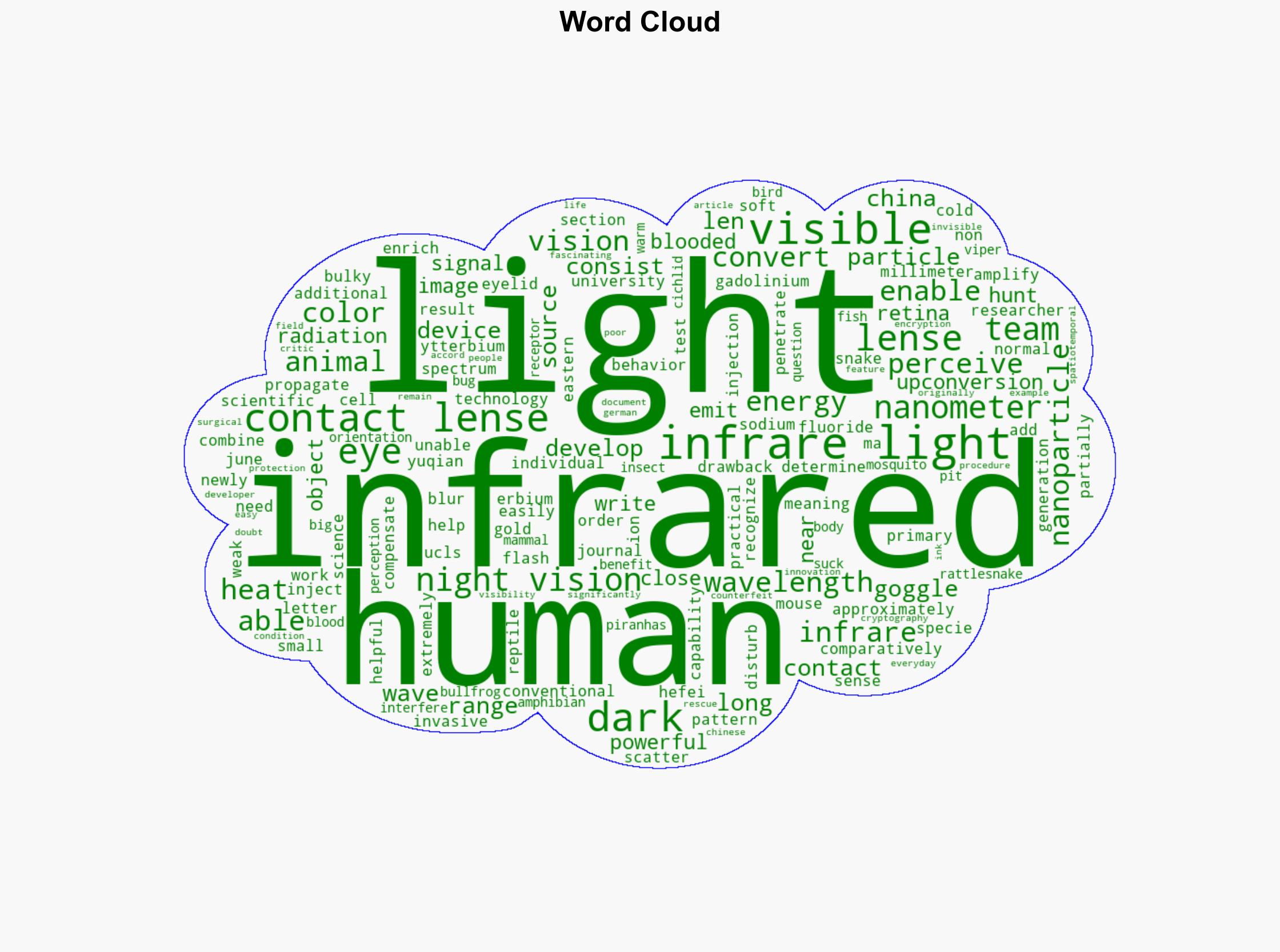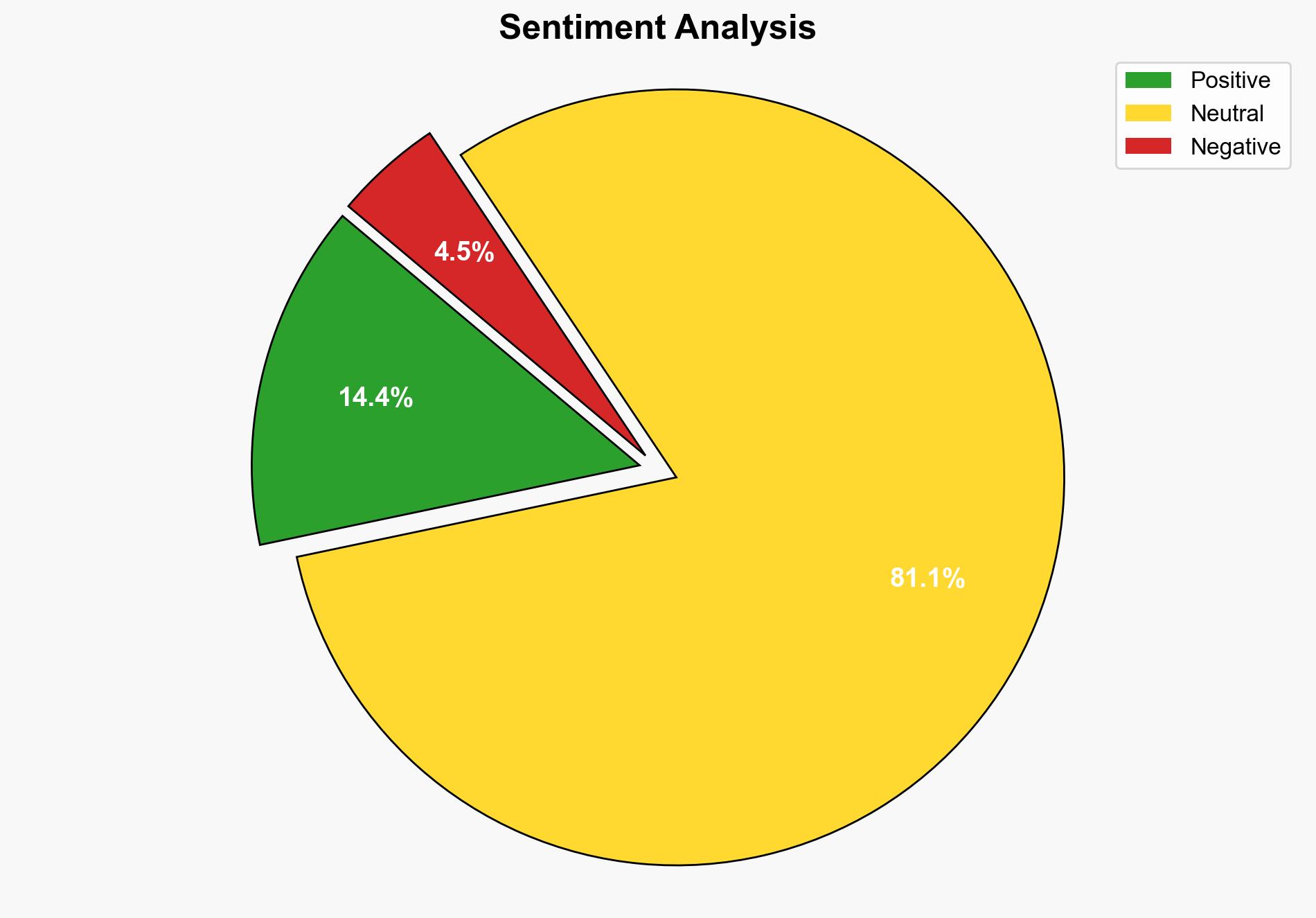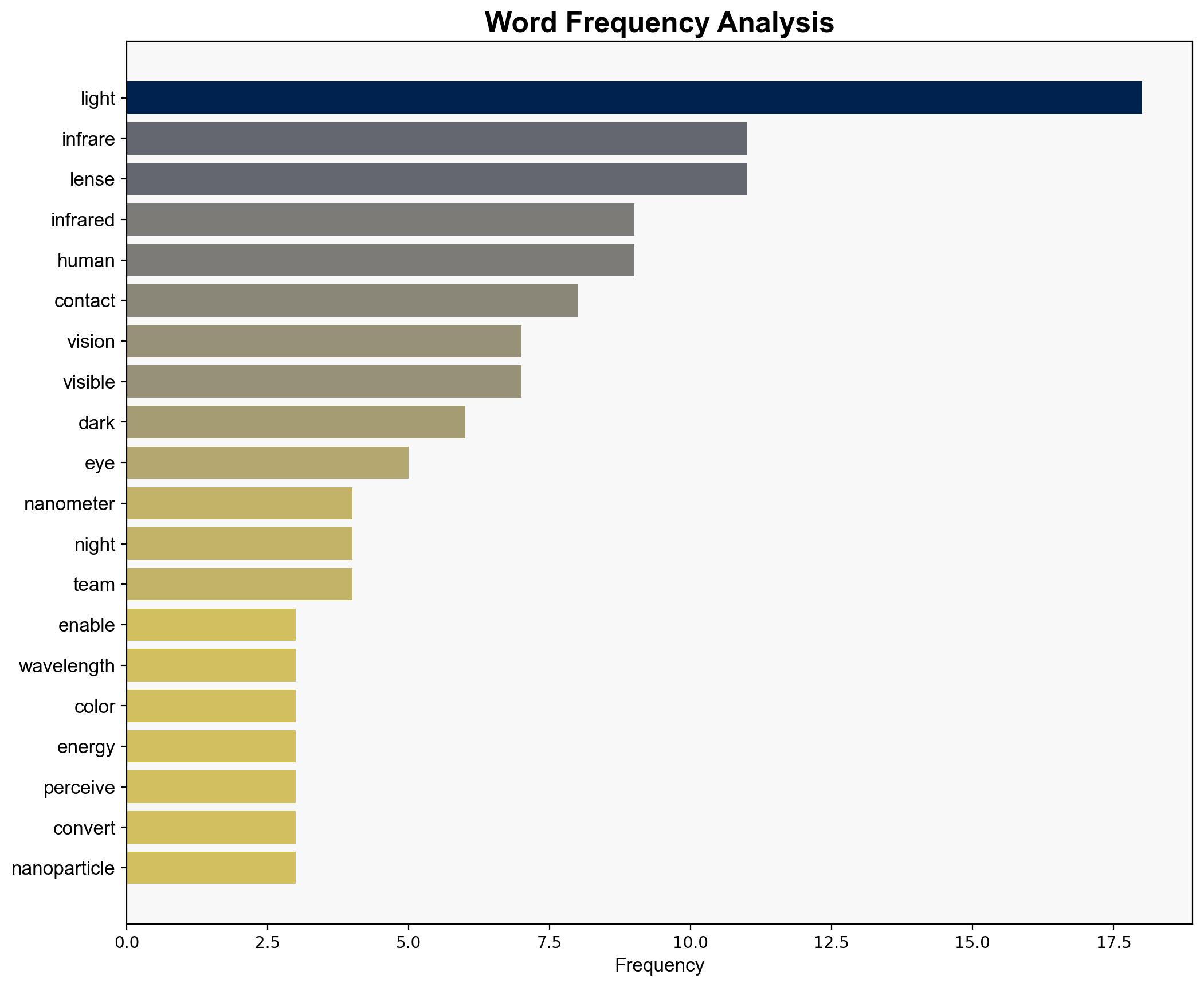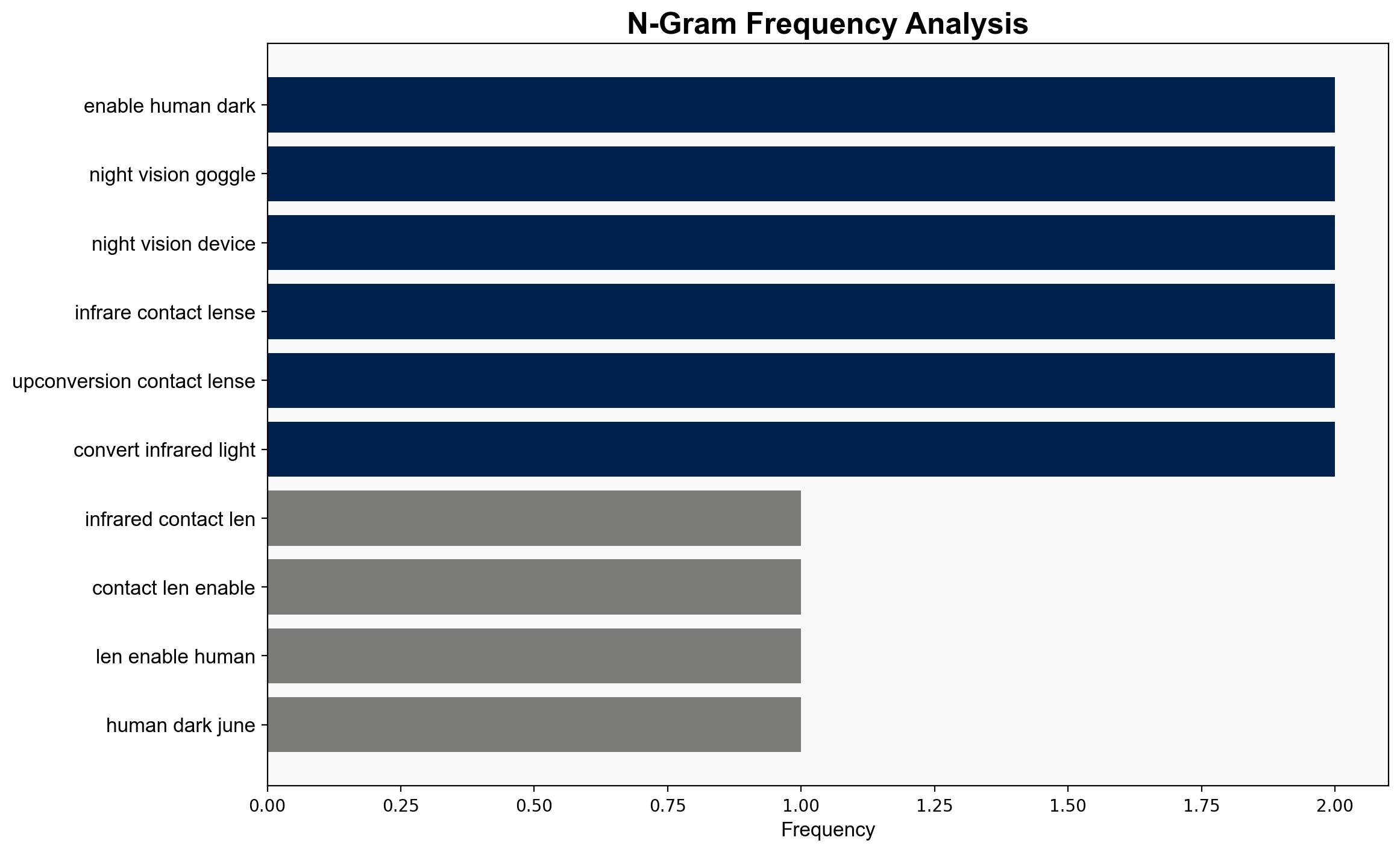Infrared contact lens enables humans to see in dark – DW (English)
Published on: 2025-06-01
Intelligence Report: Infrared Contact Lens Enables Humans to See in Dark – DW (English)
1. BLUF (Bottom Line Up Front)
Researchers in China have developed an innovative infrared contact lens that allows humans to see in the dark by converting infrared light into visible light. This technological advancement could revolutionize night vision capabilities, offering significant implications for both civilian and military applications. However, challenges such as image blurriness and the need for further testing remain. Strategic recommendations include monitoring technological advancements and assessing potential applications in various fields.
2. Detailed Analysis
The following structured analytic techniques have been applied to ensure methodological consistency:
Adversarial Threat Simulation
Potential adversaries could exploit this technology for covert operations, necessitating enhanced security measures and counter-surveillance strategies.
Indicators Development
Monitor advancements in infrared technology and related patents to identify emerging trends and potential threats.
Bayesian Scenario Modeling
Assess the likelihood of widespread adoption and integration of infrared contact lenses in various sectors, considering technological, economic, and regulatory factors.
3. Implications and Strategic Risks
The introduction of infrared contact lenses could alter the landscape of night-time operations, impacting military tactics and law enforcement strategies. Additionally, the technology may pose privacy concerns if used for surveillance without detection. The potential for misuse by non-state actors or criminal organizations could increase security risks.
4. Recommendations and Outlook
- Encourage collaboration between government agencies and research institutions to explore the potential applications and limitations of this technology.
- Develop regulatory frameworks to ensure ethical use and prevent misuse in surveillance or criminal activities.
- Scenario-based projections:
- Best Case: Enhanced night vision capabilities improve safety and efficiency in rescue operations and military missions.
- Worst Case: Technology is exploited for unauthorized surveillance, leading to privacy violations and security breaches.
- Most Likely: Gradual adoption in specialized fields with ongoing refinement to address current limitations.
5. Key Individuals and Entities
Yuqian Ma and the research team at the University of Science and Technology of China.
6. Thematic Tags
technological innovation, night vision technology, infrared optics, security implications





